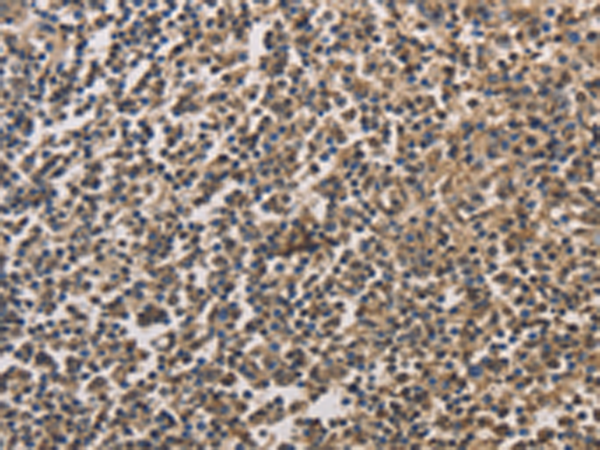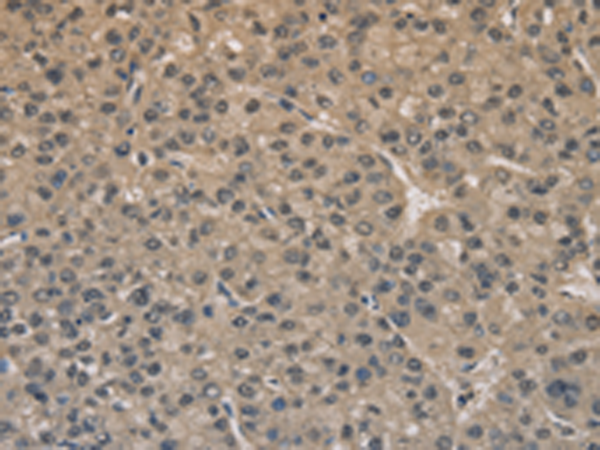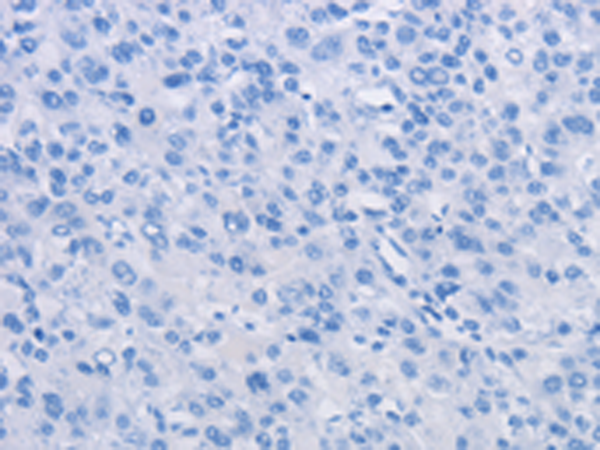| 货号: S217371 |
| 产品全名: DRG1 兔多抗 |
| 基因符号 NEDD3 |
| UNIPROT ID: Q9Y295 (Gene Accession – BC019285 ) |
| 背景: DRG1 (developmentally regulated GTP binding protein 1), also known as NEDD3 (neural precursor cell expressed developmentally down-regulated protein 3), is a 367 amino acid protein that localizes to the cytoplasm and belongs to the GTP1/OBG family. Expressed at high levels in heart, kidney and skeletal muscle and at lower levels in brain, liver, placenta, lung, colon and spleen, DRG1 binds to TAL1 and TAL2 and is thought to play a role in cell proliferation and differentiation, as well as in apoptosis, suggesting a role in tumor formation and metastasis. DRG1 is subject to polyubiquitination and sumoylation, the former of which induces proteolytic degradation. The gene encoding DRG1 maps to human chromosome 22, which houses over 500 genes and is the second smallest human chromosome. Mutations in several of the genes that map to chromosome 22 are involved in the development of Phelan-McDermid syndrome, Neurofibromatosis type 2, autism and schizophrenia. |
| 抗原: Fusion protein of human DRG1 |
| 经过测试的应用: ELISA, WB, IHC |
| 推荐稀释比: IHC: 50-200;WB: 500-2000;ELISA: 2000-5000 |
| 种属反应性: Rabbit |
| 克隆性: Rabbit Polyclonal |
| 亚型: Immunogen-specific rabbit IgG |
| 纯化: Antigen affinity purification |
| 种属反应性: Human, Mouse |
| 成分: PBS (without Mg2+ and Ca2+), pH 7.4, 150 mM NaCl, 0.05% Sodium Azide and 40% glycerol |
| 研究领域: Signal Transduction, Cancer |
| 储存和运输: Store at -20°C. Avoid repeated freezing and thawing |

Immunohistochemistry analysis of paraffin embedded Human tonsil tissue using 217371(DRG1 Antibody) at a dilution of 1/20(Cytoplasm). | 
In comparision with the IHC on the left, the same paraffin-embedded Human tonsil tissue is first treated with the fusion protein and then with 217371(Anti-DRG1 Antibody) at dilution 1/20. | 
The image on the left is immunohistochemistry of paraffin-embedded Human liver cancer tissue using 217371(Anti-DRG1 Antibody) at a dilution of 1/20. | 
In comparision with the IHC on the left, the same paraffin-embedded Human liver cancer tissue is first treated with fusion protein and then with D222256(Anti-DRG1 Antibody) at dilution 1/20. | 
Gel: 6%SDS-PAGE, Lysate: 40 μg;
Lane: Human fetal brain tissue;
Primary antibody: 217371(DRG1 Antibody) at dilution 1/500;
Secondary antibody: Goat anti rabbit IgG at 1/8000 dilution;
Exposure time: 40 seconds | |
|







